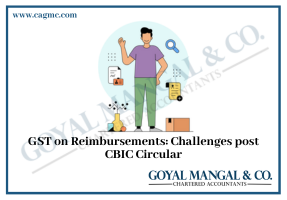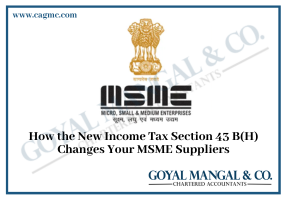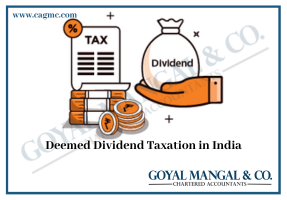 Custom duty, in layman’s language, is an indirect tax imposed upon the export and import of goods from one country to another. In Independent India, the Parliament repealed the colonial laws on customs and substituted them with the Customs Act, of 1962, and the Customs Tariff Act, of 1975 respectively. The term import has been derived from the conceptual meaning to bring goods and services into the country. Since, Import in India is important hence, in this article we will discuss India’s Imports by category.
Custom duty, in layman’s language, is an indirect tax imposed upon the export and import of goods from one country to another. In Independent India, the Parliament repealed the colonial laws on customs and substituted them with the Customs Act, of 1962, and the Customs Tariff Act, of 1975 respectively. The term import has been derived from the conceptual meaning to bring goods and services into the country. Since, Import in India is important hence, in this article we will discuss India’s Imports by category.
|
Table of Contents |
Introduction
The term Import is derived from the conceptual meaning as in to bring goods and services into the port of the country. The buyer of such goods and services is known as an Importer. Furthermore, Section 2(23) of the Customs Act, 1962 defines “Import”, with its grammatical variations and cognate expressions, means bringing into India from a place outside India.
Anything being brought from overseas is treated as imports and the parties involved are the seller/exporter, freight forwarder/career, buyer/importer, and custom authority. For any foreign currency transaction, the basic documents required are permission IEC (Import Export Code) and PAN (Permanent Account Number).
The vital point is how are goods bought from overseas and made available to users for sale or consumption. Furthermore, Section 2(25) Customs Act, 1962 defines “imported goods” means any goods brought into India from a place outside India but does not include goods that have been cleared for home consumption. A trader cannot import goods in any manner he wants but has to follow a procedure of import trade.
Categories of Import Items
The following are the categories of Imported Items:
- Freely Imported
- Restricted Items
- Prohibited Items
In the case of import of service, no transport documents are required but in place of transport documents, we need a GST certificate, PAN, tax paid challan, 15CA, and 15CB. Similarly, in case of deemed imports in place of transport documents as required for direct import, we need a permission letter from the Development commissioner, a letter seeking approval from Development Commissioner by the manufacturer for manufacturing goods, delivery challans under Rule 11, evidence custom duty if goods are delivered from SEZ.
Types of Imports in India
The following are the types of Imports in India:
Direct Imports: In the case of direct import the buyer buys products directly from the supplier of an overseas country, without the involvement of intermediates. So only two parties are involved:
- One is exporter/supplier
- One is an importer/buyer.
Goods are entered in the territory of the country post making of Bill of entry i.e., evidence of import. The time of supply would be the day when this is recorded in the customs portal, not from the invoice date. The invoice date would be the date when goods are dispatched from the supplier’s warehouse and handed over to the freight forwarder.
Deemed Imports: All we know is that in the case of imports goods should touch the customs border but there is an exception where customs involvement is not required if goods are supplied from a manufacturer functioning in DTA (Domestic Tariff Area) and supplied goods to the importer on behalf of the exporter.
Import of services: Import of services refers to the supply of any service where the service provider is located outside the territory of the country but the place of supply would be within the territory of the service receiver. Service means anything other than goods, money, and securities and supply includes the import of services for consideration. Supply of service is treated as interstate trade.
Third-party Imports: One knows that in a foreign transaction there are two parties involved:
- Seller
- Buyer
- And the payment is directly flown to the seller from the buyer.
Types of Import
There are two basic types of Import:
- Industrial and Consumer Goods
- Intermediate Goods and Services.
Advantages of Import
The following are the advantages of Import:
- Reduce dependence on existing markets
- Exploit international trade technology
- Extend sales potential of existing products
- Maintain cost competitiveness
- Fulfillment of domestic needs
- Arrangement of cheaper goods
- Upliftment of the standard of living of people
- Options for customers
Disadvantages of Import
The following are the disadvantages of Import:
- Importation of items from other countries can increase the risk of getting damaged items.
- Excessive competition
- Risk of diseases getting transmitted from other countries from where the goods are getting exported
The procedure of Import Trade
The following is the procedure for Import Trade:
- Trade Enquiry: As soon as the trader thinks of importing goods, he makes a trade inquiry. Firstly, he collects information about the availability of goods of his requirements and the name of the country and exporter he has to deal with.
- Obtaining Importer License: Certain products have been prohibited from importing. In order to import certain products, one requires one requires an importer license from the government.
- Obtaining Foreign Exchange: As per regulation, every importer needs to secure the sanction of foreign exchange.
- Obtaining Letter of Credit: a letter of credit is a guarantee issued by the importer’s bank that will honor up to a certain amount of export bills to the bank of the exporter.
- Recipient of Shipment Advice: The overseas supplier after loading the goods on the ship dispatches the shipment advice to the importer.
- The arrival of Goods: When the goods arrive in the importer’s country, the person in charge of the carrier informs the officer in charge
- Custom Clearance and Release: Imported goods are subjected to clearance.
Documents needed for Import of an Item
The following are the documents needed for the Import of an item in India:
- Bill of Landing/ Airway Bill: Bill of landing under sea shipment or airway bill under sea shipment is required to be submitted with customs for import customs clearance purposes.
- Invoice: An invoice is required for imports custom clearance for value appraisal that concern customs official.
- Bill of Entry: This is a major document for import custom clearance
- Import License: This license is obtained for importing specific goods as per guidelines that are given by the government.
- Insurance Certificate: The insurance certificate is a supporting document against the importer’s declaration on terms of delivery
- Industrial License: A copy of the Industrial License is required under specific goods importing.
- DEEC/DEPB/ECGC or any other documents for Duty Benefits: If the importer avails any duty exemptions against imported goods under different schemes like DEEC/DEPB/ECGC etc.
Conclusion
Anything that is brought from overseas is treated as imports and the parties involved are the seller/exporter, freight forwarder/career, buyer/importer, and custom authority. For any foreign currency transaction, the basic documents required are permission IEC (import-export code) and PAN (Permanent Account Number). The vital point is how are goods being bought from overseas and are available to users for sale or consumption. Furthermore, Section 2(25) Customs Act, 1962 defines “imported goods” meaning any goods that are brought to India from a place outside India but does not include goods that have been cleared for home consumption.







